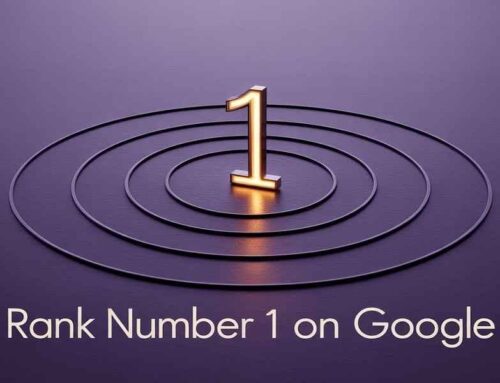
Master Social Media Marketing
Social media is no longer just a platform for sharing cat videos and vacation snaps. It’s become a powerful tool for businesses to connect with their audience, build brand awareness and drive sales. But with ever-changing algorithms and a saturated digital landscape, standing out and truly engaging your audience can be challenging.
Let’s explore some strategies to help you master Social Media Marketing and boost your engagement and reach.
1. Understand Your Audience
Understanding your audience is the first and most critical step in any social media marketing strategy. Without a clear grasp of who your audience is, what they want, when they want it and how they consume content, any effort you put into your strategy may fall flat. Here’s how to get started:
- Develop Personas: Create detailed personas that encapsulate the demographics, interests, behaviors and pain points of your target audience.
- Engage in Social Listening: Use tools and platforms to monitor relevant discussions and trends. The insights from social listening can guide your content creation and engagement strategies.
- Analyze Data: Regularly review your social media analytics to understand what content resonates most with your audience. Factors like engagement rates, click-through rates and conversion data are telling signs of your audience’s preferences.
2. Craft Compelling Content
Content is at the heart of social media marketing. Compelling content not only captures the audience’s attention but also drives engagement and shares. Here’s how to create content that stands out:
- Tell Stories: Humans are naturally drawn to stories. Narratives can transform brand messages into memorable experiences. Share stories that reflect your brand’s values, customer testimonials or even behind-the-scenes looks.
- Use Visuals: Visual content like images, videos, infographics and memes is more likely to be shared compared to text-only posts. High-quality visuals make your content more engaging and easier to digest.
- Create Interactive Content: Polls, quizzes and Q&A sessions can engage your audience actively. Interactive content encourages participation and can provide you with valuable insights.
- Leverage User-Generated Content: Encourage your followers to create content related to your brand. User-generated content builds community and authenticity.
3. Consistency is Key
A consistent posting schedule helps in keeping your audience engaged. Random or infrequent postings can result in lost followers or reduced engagement. To maintain consistency:
- Create an Editorial Calendar: Plan your posts in advance by creating an editorial calendar. This helps you maintain a steady flow of content and ensures you cover all essential topics.
- Automate Posting: Utilize scheduling tools like Buffer, Hootsuite or Sprout Social to automate your posts. Automation allows you to maintain consistency, especially during weekends or holidays.
- Maintain Brand Voice and Visual Style: Keep your tone, messaging and visual style consistent across all platforms. This helps in building a recognizable brand identity.
4. Engage with Your Audience
Active engagement goes beyond just posting content. It involves interacting with your followers, responding to their queries and creating a community feel. Effective engagement includes:
- Respond to Comments and Messages: Always reply to comments and messages promptly. It shows that you value your audience’s input and helps in building genuine relationships.
- Participate in Conversations: Join relevant hashtags, engage with other posts and be active in community discussions. It increases your visibility and shows that you are an active participant rather than just a bystander.
- Encourage User Interaction: Ask questions, encourage comments, create call-to-actions (CTAs) and run contests. The more interaction you solicit, the higher your engagement rates will be.
5. Utilize Influencer Partnerships
Collaborating with influencers can significantly amplify your social media reach. Influencers have established trust with their audience; their endorsement can lend credibility and attract attention to your brand. Here’s how to make the most of influencer marketing:
- Choose the Right Influencers: Align with influencers whose audience matches your target demographics. The influencer’s values and content should resonate with your brand.
- Collaborate on Authentic Content: Allow influencers creative freedom while ensuring the content stays true to your brand. Authenticity is key in influencer marketing.
- Measure Impact: Track the success of influencer collaborations through metrics like engagement rates, follower growth and conversions driven by the campaign.
6. Harness the Power of Hashtags
Hashtags are powerful tools for increasing visibility on platforms like Instagram, Twitter and LinkedIn. They help categorize your content and make it discoverable to users interested in specific topics. To maximize hashtag effectiveness:
- Use Relevant Hashtags: Research and use popular and relevant hashtags within your niche. Tools like Hashtagify can help identify trending hashtags.
- Create Branded Hashtags: Develop unique hashtags specific to your brand or campaign. Branded hashtags encourage user participation and create a centralized hub for related content.
- Avoid Overloading Hashtags: While it’s tempting to use every popular hashtag available, it can make your posts look cluttered and spammy. Stick to a few well-researched and relevant hashtags.
- Monitor Hashtag Performance: Keep track of which hashtags are driving the most engagement and adjust your strategy accordingly.
7. Leverage Platform-Specific Features
Each social media platform offers unique features designed to enhance user engagement. Utilizing these features can give your content an edge:
- Instagram Stories and Reels: Use Stories for behind-the-scenes content, quick updates and user-generated content. Reels are great for short, engaging videos that can be easily discovered in the Explore tab.
- Facebook Groups: Build a community within Facebook Groups. They are perfect for nurturing discussions, sharing exclusive content and providing a platform for customer support.
- Twitter Threads and Lists: Twitter threads allow for the delivery of more in-depth content, while lists can help organize your feed and engage more meaningfully with a targeted audience.
- LinkedIn Articles: Post long-form articles to establish thought leadership within your industry. LinkedIn also supports video content and live streaming for deeper engagement.
- YouTube Playlists and Community Tab: Organize your videos into playlists for structured viewing and use the Community Tab to engage with your audience through posts, polls and images.
8. Invest in Paid Advertising
Organic reach on social media platforms is becoming increasingly challenging. To complement your organic efforts, investing in paid advertising can help expand your reach and target highly specific audiences. Consider the following:
- Set Clear Goals: Define what you aim to achieve with paid ads, whether it’s brand awareness, website traffic, lead generation or sales.
- Target Your Ads: Utilize the advanced targeting options available on each platform to reach your ideal audience based on demographics, interests and behaviors.
- Test and Optimize: Run A/B tests to see which ads perform best. Monitor your ad performance and make data-driven adjustments to improve results continuously.
- Budget Wisely: Allocate your budget across different platforms and ad formats to find the best ROI. Start small and scale up based on the performance data.
9. Measure and Analyze Performance
Consistently measuring and analyzing your social media performance is crucial to refining your strategy and achieving better results over time. Here’s what to do:
- Set KPIs: Establish key performance indicators (KPIs) aligned with your goals, such as engagement rate, reach, impressions and conversion rates.
- Use Analytics Tools: Platforms like Facebook Insights, Twitter Analytics and Instagram Insights provide valuable data. External tools like Google Analytics can offer deeper insights into traffic and conversions.
- Monthly Reviews: Conduct monthly reviews of your social media performance to identify trends, successes and areas for improvement.
- Adjust Your Strategy: Use your findings to refine your approach. Experiment with different types of content, posting times and engagement tactics to see what works best for your audience.
10. Stay Updated and Adapt
The social media landscape changes rapidly. To stay ahead of the curve, it’s vital to keep up with the latest trends, platform updates and industry best practices:
- Follow Industry News: Regularly read social media marketing blogs, attend webinars and subscribe to industry news updates.
- Join Professional Communities: Engage in forums and social media groups where marketers share tips and insights.
- Continue Education: Take online courses and workshops to continuously improve your skills and knowledge.
Conclusion
Mastering social media marketing is an ongoing process requiring dedication, creativity and strategic thinking. By understanding your audience, crafting compelling content, maintaining consistency, engaging actively, leveraging influencer partnerships and utilizing platform-specific features, you can significantly boost engagement and expand your reach.
Investing in paid advertising, consistently measuring performance and staying updated with the latest trends will ensure your social media strategy remains effective and dynamic.
Remember, successful social media marketing is about building genuine relationships with your audience, creating value and staying adaptable in an ever-changing digital world.
Start implementing these tips today and watch as your social media presence grows, your engagement rates increase and your reach extends far beyond what you thought possible.
Happy Marketing!














